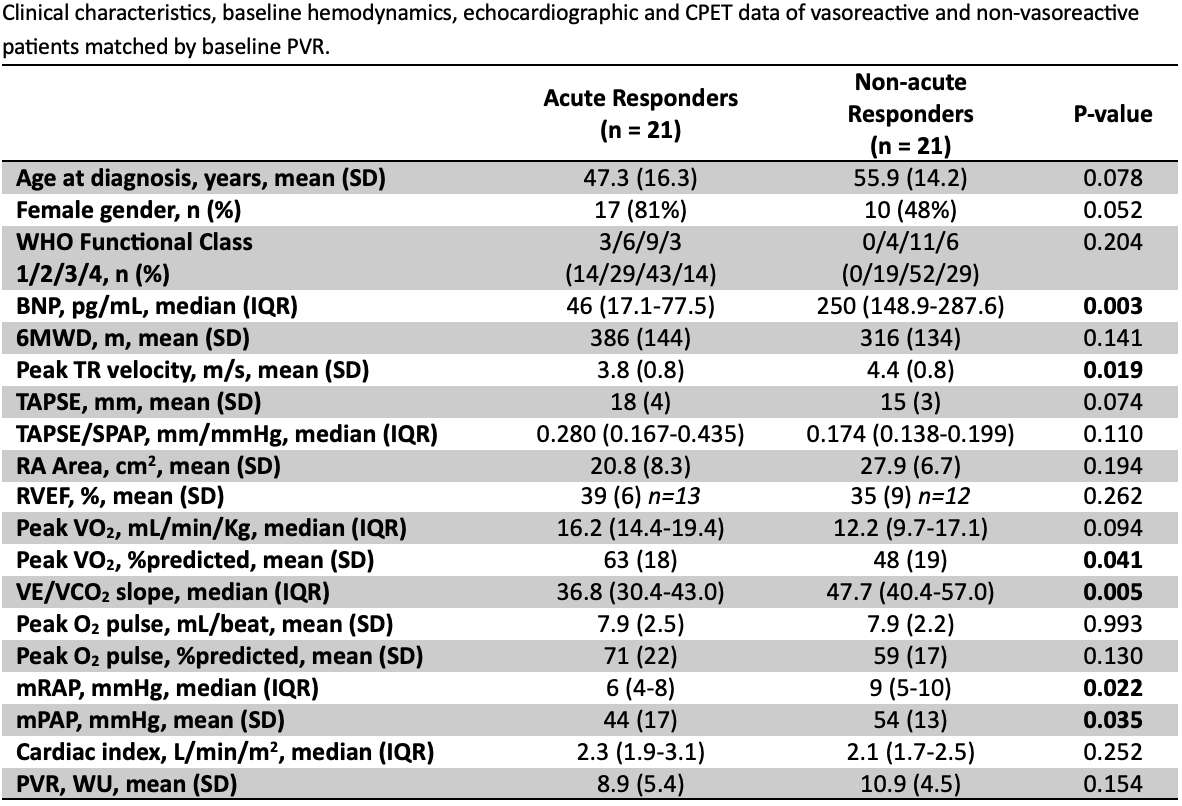Abstract
Introduction: Vasoreactivity testing is recommended in idiopathic PAH patients to identify a subset of ?acute responders?. Such patients can be successfully treated with calcium channel blockers and share a better long-term prognosis than non-acute responders (Humbert M et al. Eur Heart J 2023;61:2200879) . Still, little is known on the cardiopulmonary exercise testing (CPET) profile of this subgroup of patients and whether such a non-invasive tool might be used for screening purposes (Langleben D et al. Pulm Circ 2017;5:588).
Aim: Assess any difference in baseline CPET variables between acute vasodilator responders and non-responders.
Methods: Data of 21 incident vasoreactive patients and 21 PVR-matched non-vasoreactive IPAH patients were collected from a prospective database. Included subjects underwent CPET at the time of diagnosis.
Results: The two groups did not differ demographically. Acute vasoreactive patients displayed a significantly higher baseline peak oxygen consumption expressed as %predicted (PeakVO2 %predicted) and higher ventilatory equivalent for carbon dioxide slope (VE/VCO2 slope). Hemodynamically, acute responders had a significantly lower mean RAP and mean PAP.
Conclusions: Albeit on a small group of patients, the differences in CPET variables hereby reported might help further phenotype acute vasoreactive patients and warrant further investigation.
